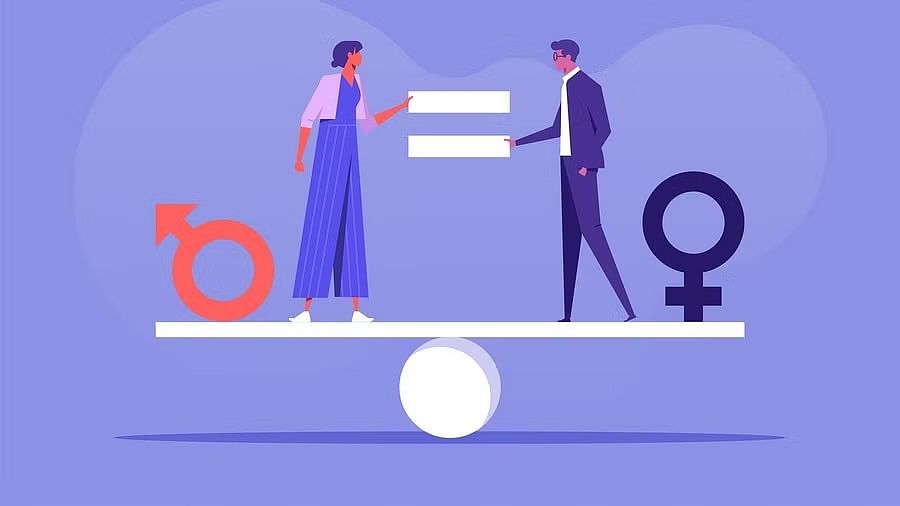
Image for representation.
Credit: iStock Photo
“I’d rather be a cyborg than a goddess,” declared Donna Haraway in her seminal 1985 piece A Cyborg Manifesto, cited endlessly by scholars of gender, technology, and other social sciences ever since.
Haraway’s manifesto was a call for a departure from traditional understandings of identity, biology, and, indeed, power. She called for an annihilation of binaries — male/female, nature/culture, human/machine.
In the several decades since Haraway published her much-vaunted manifesto, we continue to live in binaries, especially of the gender type. Nowhere has this binary been more manifest than in the everyday practice of modern medicine and the way that medical and biological sciences have treated half of that binary (women, of course!).
The misunderstanding and dismissal of women’s pain is a global problem. Ask any woman with polycystic ovary syndrome (PCOS) or endometriosis. Women being told the pain is in their minds, or that it is only natural to have pain, and they shouldn’t make a big deal of it continues to be an everyday reality. A large part of this kind of callousness can be attributed to the lack of understanding of women’s pain and women’s bodies.
Gabrielle Jackson, in her book Pain and Prejudice, traces the history of women’s healthcare; and shows how little attention has been paid to it. She shows how the knowledge gap about women becomes filled by hysteria narratives: it can’t be that the treatment isn’t working or that she’s in pain; she’s just being difficult, she must be crazy — hysterical.
Aristotle once wrote about females being ‘mutilated males’; suggesting that women are just an inferior version of men. Western medical culture has imbibed this description, and kept it alive. My favourite example of this was reported in the book Doing Harm by Maya Dusenbery. It is a pilot study conducted by Rockefeller University (funded by the National Institutes of Health) to study how obesity affected breast and uterine cancer; and it did not enrol a single woman in the study!
Many such research projects assume that results that are valid for males must be valid for females, without considering the differences in bodies that tend to make a lot of difference in society otherwise. Of course, a small number of men do develop breast cancer, but as US Senator Olympia Snowe said at a congressional hearing, ‘Somehow, I find it hard to believe that the male-dominated medical community would tolerate a study of prostate cancer that used only women as research subjects.’
It isn’t just research studies. Medical textbooks have done enough and more to entrench societal gender biases into science and its practice. Emily Martin’s 1991 article The Egg and the Sperm exposed the subtle yet persistent ways these gendered narratives show up in scientific literature. First, most of the health needs of women revolve around their ability to produce offspring; a woman is a womb.
Second, she is a hapless maiden requiring male rescue. In most medical textbooks, reproduction is described through a Rapunzel-esque fairy tale: the egg is passive, waiting to be saved by the active, adventurous sperm. The female gamete is ‘shed’, but the sperm is ‘produced’; the egg ‘is swept’ or ‘drifts’, but sperm are ‘streamlined’ and ‘propel’ the semen, to ‘penetrate’ the egg. You can almost see the damsel in distress being rescued by her bold mate.
The problem here is not just the reinforcement of outdated gender roles — it’s bad science. As Martin points out, the egg is not passive at all. It plays an active role in attracting and interacting with sperm (at this point, another gender stereotype takes root — of the egg as a femme fatale, trying to ‘entrap’ a male sperm). The insistence on casting the sperm as the hero reveals how deeply our cultural narratives shape the way we think about biology. Why don’t our textbooks and research papers consider reproduction as a process of mutual co-operation?
Haraway’s cyborg critique is vital here: these works perpetuate the illusion of nature and biology as fixed and stable, reinforcing categories like ‘male’ and ‘female’ as eternal truths. But what if, as Haraway suggests, we embraced the fluidity and complexity of cyborg thinking? What if we reimagined our bodies not through binary oppositions but through networks, interactions, and possibilities?
We can no longer afford to see these writings as innocent conveyors of biological fact. They are active participants in shaping the way medicine is practiced, and by extension, how life is lived. Haraway’s call to become cyborgs — beings that transcend rigid boundaries — offers a radical way forward. This is not just about rewriting medical textbooks. This is about rethinking what it means to be human in a world that is increasingly defined by the intersections of biology, technology, and culture.
(Vidya Subramanian is associate professor at Jindal Global Law School (JGLS). X: @ vidyas42.)
Disclaimer: The views expressed here are the author's own. They do not necessarily reflect the views of DH.